#Asamkirche
Explore tagged Tumblr posts
Text
Мюнхен, Германия 🇩🇪
213 notes
·
View notes
Text

Asamhaus, München
#there are actually so many nice posts in my drafts that I’ve simply never posted and idk why lol#never want to annoy my followers by posting too much I guess. anyway#mine#Munich#exteriors#baroque#rococo#angel#cherub#historic architecture#Asamkirche#Asamhaus
8 notes
·
View notes
Text
Munich / München - Part 1
Munich / München - Part 1
Munich / München was next on my destination list. I regret not spending more time in Germany other than my six days in Munich. It’s a big country with so much to see and offer. It deserves more time. More reason to return…always wanted to go to Berlin. Looking back, this time-constraint was self-imposed, hence the regret. The decision to go to Munich was because it is so close to Zurich, easy and…
#Altes Rathaus#Asamkirche#Augusten Hotel#Bavaria House of Wittelsback#Charles Theodore#Cosmos Damian Asam#Deutsche Bahn IC bus#Duke Wihelm V#Egid Quirin Asam#Elector of Bavaria#Glockenspiel tower#Karlsplatz#Karlstor#Marienplatz#Mary’s Square#München#München by bus#Munich#Neues Rathaus#New City Hall#Old Town Hall#Renata of Lorraine#Schafflerstantz#Zurich to Munich
0 notes
Text
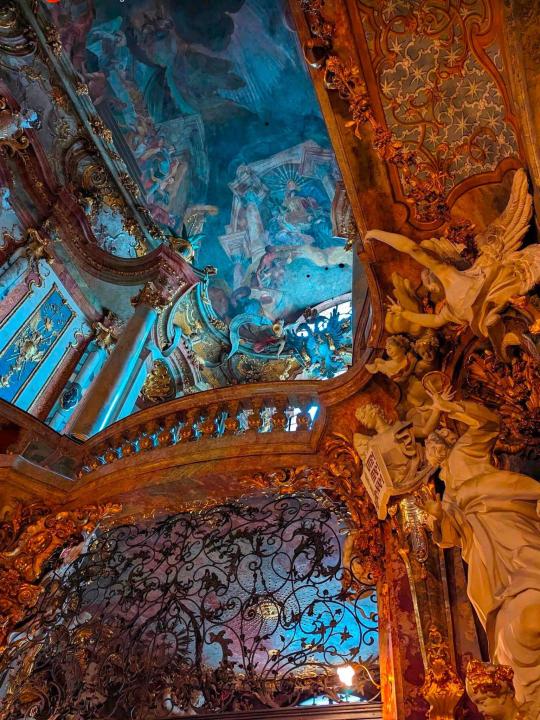
7 notes
·
View notes
Text

A jewel of German Baroque, the Asamkirche, the popular name for the church of St. John of Nepomuk in Munich, is the Asam church chapel.
Built by the Asam brothers, Egid Quirin and Cosmas Damian, between 1733 and 1746 as their private chapel.
390 notes
·
View notes
Text
I love art. All those ASCII pictures. Starry Night by van Gogh. All those tagged walls I pass by every day. All of those huuuge boobs I cannot run from on the internet. Who's afraid of red, yellow and blue. Rothko. Mapplethorpe. That fucking penis stretched over the table. 2:22 AM. The Lobster. House of Leaves. That's one naked woman painted in those three ugly colours, that my dad decided to show me one day. Piss Christ. This cool handmade plate I saw on a flea market five years ago. All those horny furries I see on my dashboard. Villa La Rotonda. BEST CROISSANT IN PARIS by Luis. Triple Baka. Donatello's David. Pollock. Fucking Disco Elysium. Duchamp's Fountain. Everything Everywhere All at Once. DOUBLE KING by Felix Colgrave. Zadupie by Ryszard Kaja. Twister mat that's every year used like a pride flag. That one person's hair that I see everyday in school. The other person's backpack that's fully decked out in colorful pins. City & City by China Mieville. Roundabout. Asamkirche. Tag walls, punch fascists. Beethoven. Tamaytka's sketchbooks. The Pantheon. Kafka's Metamorphosis. Monster cans. Mueck. Bliss. Matisse. Notre Dame. Sea shanties. Sparkledogs. Land of the Lustrous. Berserk. Dizzy Gillespie. The spoon with those cool flowers that I have in my dorm room. All the cool fucking doodles on the margins of people's notebooks. Omfg I love art.
9 notes
·
View notes
Text
Stranded in Monaco di Baviera
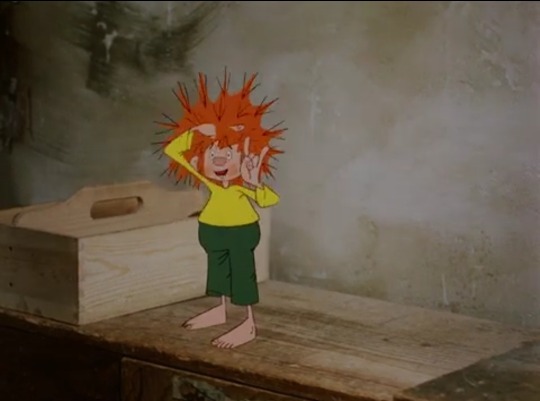
I started preparing for this trip by watching the first season of Meister Eder und sein Pumuckl. Little did I know that my short vacation will double in length.
There was a time when München was known as the Haupstadt der Bewegung, but in the last few days there was no bewegung of trams, buses and most of the flights were canceled. So I got stuck.
The first thing that hit me in the city was the smell. Later I would feel the same smell (or another, a mixture of pork, sausages and Glühwein) even from the 91 m high tower of the St. Peter church.
However the first thing to warm my soul was this Osram advert:

On the way to the Glypthotek I was happy to see this:
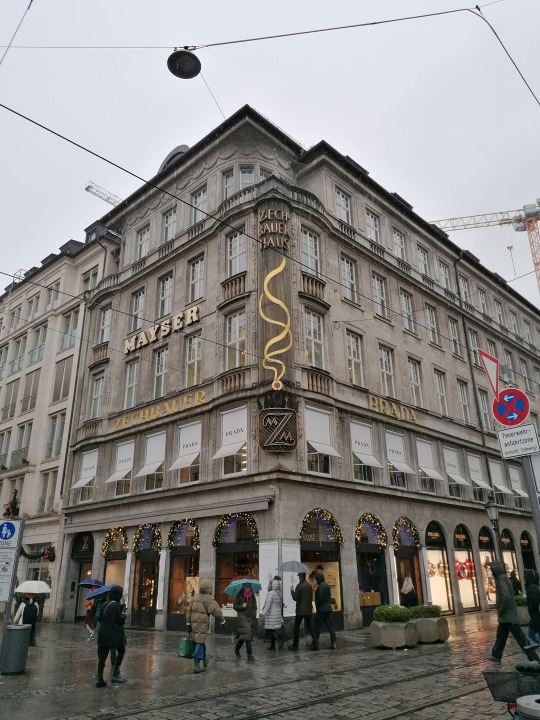
Of course one goes to the Glypthotek to see the Medusa Rondanini.
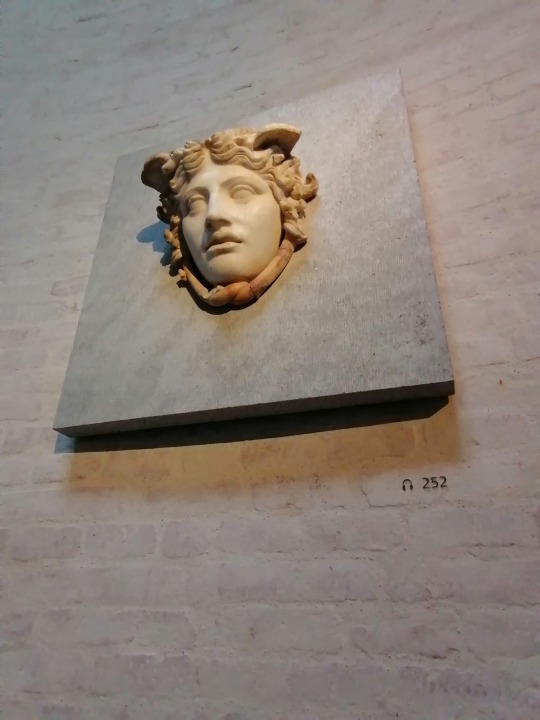
"the mere knowledge that such a work could be created and still exists in the world makes me twice the person I was"
And in München one goes to eat and drink.
Obazda goes very good with beer (look up a recipe and make it as soon as you can).
Pork knuckles were a disappointment (I think the ones I am used to are smoked beforehand).
The beef soup? My mother makes better soup from chicken!
If you care about sacrificed animals and you think that every possible part of it should be used, also if you like to eat organs, you might try Milzwurst that is a thick sausage made with spleen. You might try it, but it's just meh...
What to drink? Drink helles, Feuerzangenbowle, Enzian and Bärwurz Schnaps and generally spirits that are so obscure that even the young waitress doesn't know about their existence (Bockbierbrand).
Now about something else. On the third day the snow was so big that the airport got in full chaos mode.
On that day I have seen a young woman skiing on the sidewalk. Next level for sure.

In six days I have seen almost everything I wanted and some things I didn't even care about so much and I made a daytrip to Norimberga.
Not much photos on my phone. I will make later a then and now post.
So
The End
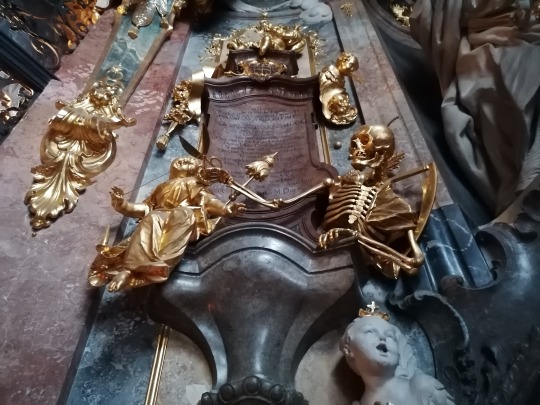
Nyissz! at Asamkirche
***
the music for this trip was:
youtube
4 notes
·
View notes
Text
Week 5: Cafe Culture & Solo Trip to Germany!
¡Hola amigos!
It’s week 5 in Madrid and I’m really feeling adjusted to the city. Next week is UMich spring break and a bunch of my friends are visiting and I can’t wait to see them! The only issue is that I have three exams the week they’re here, so I’m trying really hard to maximize my time with them while passing my classes. With that, I’ve been trying really hard to lock in and get a ton of studying done, but it’s rather difficult when you’re in the middle of Spain and everyone is out having fun. Exams are not my strong suit and they’re the majority of your grade here, so wish me luck. Thankfully I’m pass/fail so I need a 50 in all of my classes, but two of them are rather difficult so I’m extremely stressed.
Finding somewhere to study (cafes)
I personally don’t love studying on campus because of how far away it is. It’s a 40-60 minute commute, and I prefer not to stay after class so I’m not taking the train late at night. Studying at my apartment is alright, but I get so easily distracted by my phone, bed, or 10 roommates.
Because of this, I’ve been on the hunt for a place to study in the city. The first thing that came to mind was cafes, since that’s a pretty common thing to do at UMich. However, a lot of the cafes here don’t let you bring laptops to keep a more social vibe, since that’s typically how Spaniards use them. There are very few that do allow you to do work, and some have associated fees like a base payment or ordering something every hour, which I learned the hard way. This past week I went to Osom Coffee, and was charged 12€ to sit there. You can order anything on the menu within that, but I thought I could get away with just a 2€ coffee. Hurt my wallet, but I suppose the matcha and carrot cake were pretty good. I also went to La Bicicleta and managed to sneak in without buying anything, but that probably won’t work everytime. My goal is to find a good list of cafes or general study spots, and I’ll be sure to share once I figure it out.

Solo trip to Germany!
As much as I complain about not being able to study, I still went on a trip. This weekend I took a solo trip to Bavaria, Germany, and it was an amazing experience! I wanted to go on at least a few solo trips while abroad, and I’m so glad I got to do it!
I started at Munich International, and immediately took a train and two buses to the Dachau Concentration Camp Memorial Site. It was an extremely heavy experience to see it in person, but I think seeing every historical aspect when you travel is very important.
From there, I made my way back to Munich, checked into my hostel, and immediately began exploring! I pre mapped my route on Google Maps which made it a lot easier. I was able to see the Munich Residez and Hofgarten (not great in Winter), Frauenkirche cathedral, Asamkirche church (so beautiful), Marienplatz plaza with the Glockenspiel and a piano show, and the Viktualienmarkt where I tried a giant sweet and sour pickle. I also tried a Rischart chive pretzel (HIGHLY recommended) and got some goodies from the Haribo store. A few friends were also in Munich for the weekend, so we met up for Mexican food and went to the famous Hofrauhaus for beer and pretzels. Supposedly many famous figures like Mozart have attended, but I personally thought it was way more expensive than it needed to be. I tried beer with lemonade which was actually pretty good, and a giant pretzel that I wish was warm but I guess that’s just an American thing.


The next day I went to Fussen, a small town in the Alps. One of my bucket list items was to see the Neuschwanstein Castle, which was actually the inspiration for Sleeping Beauty's Castle at Disney. I once again hopped on a train and two buses and made the three hour journey there. I didn’t really plan this one out beforehand, but luckily I made it and all was well. I ended up forgetting my AirPods which I was pretty upset about, but I’m so glad it happened because the drive through the mountains was gorgeous, and I was much more present.

Once there, I paid 20€ for a guided tour of the inside of the castle. It was super pretty, but only like ⅕ of the castle is actually finished because the King was murdered, so maybe not worth that price. They also didn’t allow photography which was a little disappointing. It was a 20 minute hike up and down the mountain to see the castle, which wasn’t too bad and was rather scenic. There are also buses and horse carriages, but it didn't seem worth the money imo. I also visited the Marienbrucke for gorgeous views of the castle and mountains. To end the excursion, I stopped at a little cafe outside the castle and tried apple strudel with vanilla sauce (a huge step up from Pillsbury toaster strudel). I was a big fan.



Transportation in Munich was a little confusing at first, but overall easy to figure out. I feel extremely guilty because only 2/6 buses charged me for the ride, and I definitely hopped on some trains for free because there were no checkpoints. I did some research, and I guess it’s just an honest thing and there are random checks, but I promise I paid for the really obvious ones. It felt a little sketchy being a solo female traveler in a new country in an extremely rural area, but as long as you’re aware of your surroundings all is well.
Going on a 2-day solo trip wasn’t life changing or anything, but I’m glad I got the confidence to travel alone, eat at a restaurant alone, and just enjoy my own company. I definitely feel a lot more independent now and just generally more confident in my abilities. I highly recommend that anyone that studies abroad go on at least one solo trip because it’s honestly a lot more fun than you’d think. I’m pretty booked out for trips for the next few months, but I’m hoping to squeeze in another solo trip in May.
With that, I just got home and now it’s time to actually lock in and hope and pray I pass my exams.
Hasta luego,
Nitya Chellury
Industrial and Operations Engineering
Universidad Carlos III de Madrid
Madrid, Spain
0 notes
Text
Asamkirche, officially known as St. Johann Nepomuk Church, is a stunning Baroque masterpiece in #Munich, #Germany. Built in the 18th century by the Asam brothers, it served as their private chapel, showcasing their artistic talents. Despite its small size, the church dazzles with elaborate frescoes, gilded details, and an ornate high altar. Its dramatic interior reflects the Baroque style's emphasis on grandeur and emotion, making it a hidden gem in the heart of the city.: #architectanddesign
0 notes
Text
Baroque architecture inside Asamkirche in Munich, Germany
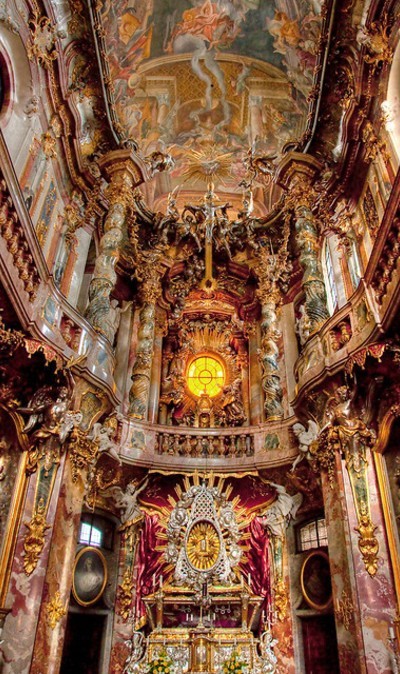
1 note
·
View note
Text
Baroque architecture inside Asamkirche in Munich, Germany

1 note
·
View note
Text
Munich Residenz & More - Munich, Germany
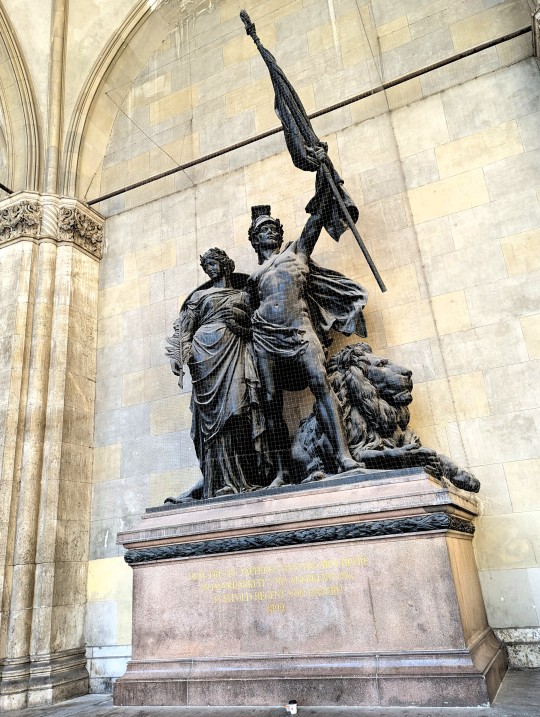
We parted ways with Dan this morning, he had to fly back to the States - Doug is losing his beer-drinking partner! This is our last day in Munich and we managed to make it a full one. We started with a walk to Odeonsplatz from the subway station, where we viewed the Feldherrnhalle - a memorial to the Bavarian army built between 1841-1844. The Theatine Church is on the same plaza, this time we were able to see it without all the street booths set up on the plaza.

Statue that is part of the Feldherrnhalle.

Theatine Church.

Details on the front of the Theatine Church.
MUNICH RESIDENZ
Our visit to this spectacular royal palace took several hours, we had a free audio guide in English - but, we finally had to set that aside and just wander around and take in all of the treasures. I am not going to comment on each picture, there is just too much info. I tried to give a sample of all the different things we saw during our tour - enjoy!
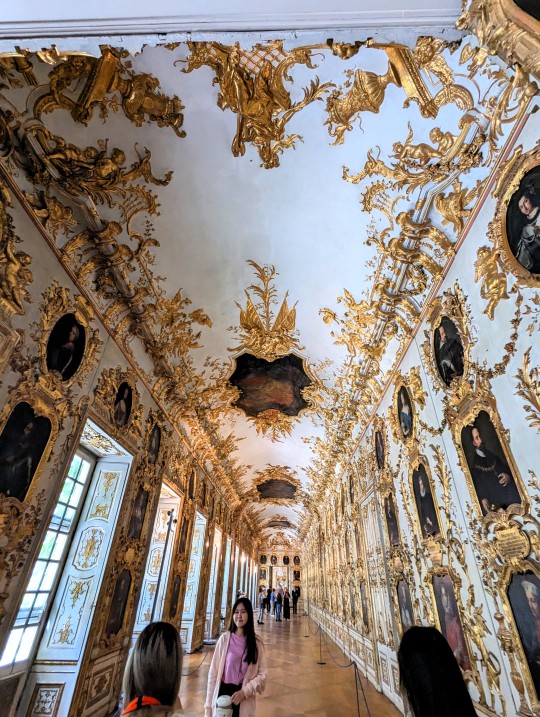
The Ancestral Hall in Munich Residenz - the first room we visited, it was just a precursor to all the extravagance we were going to see!
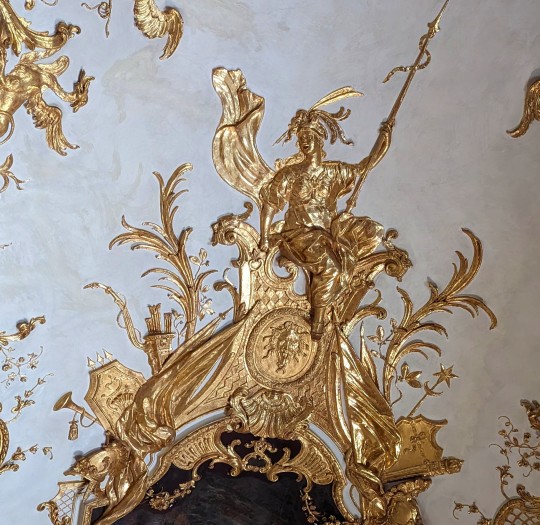

The “family tree” of the monarchy.
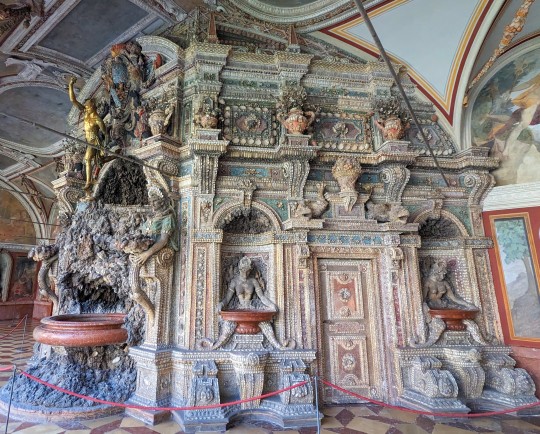
The Grotto - covered top to bottom in seashells. Really spectacular!
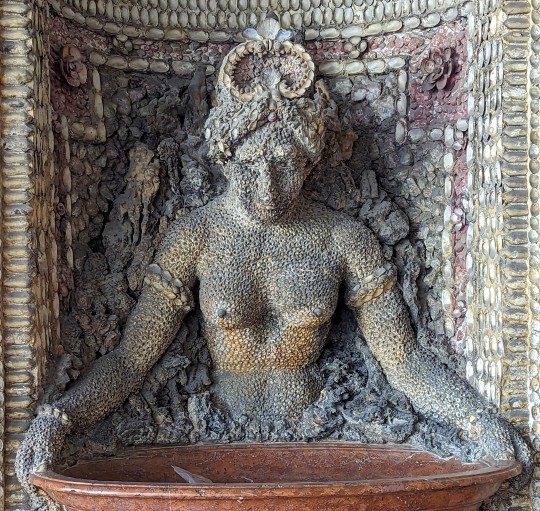


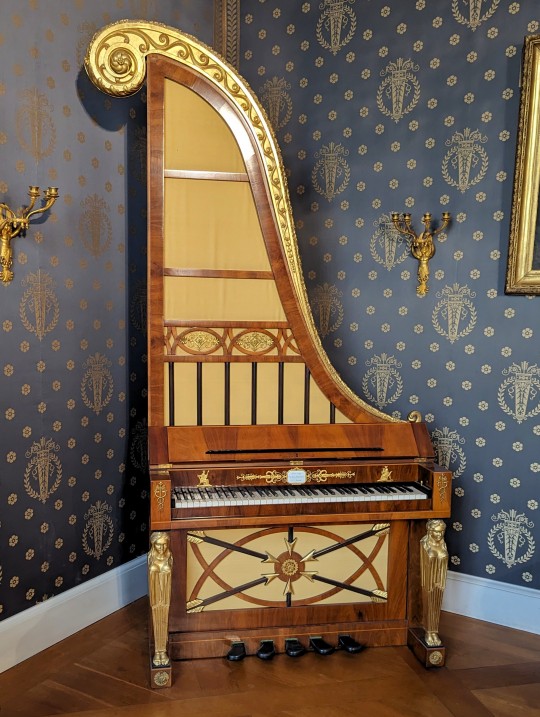
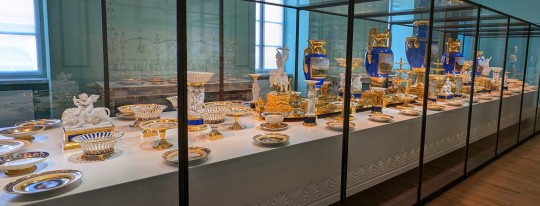
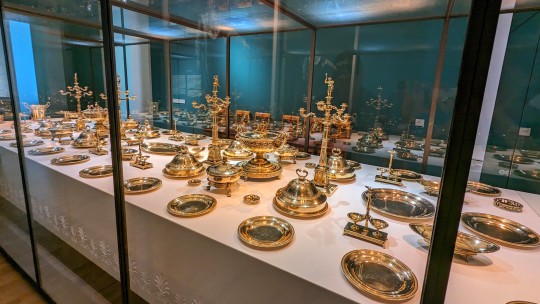
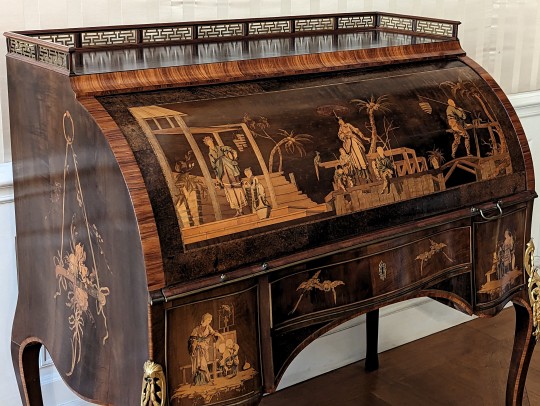
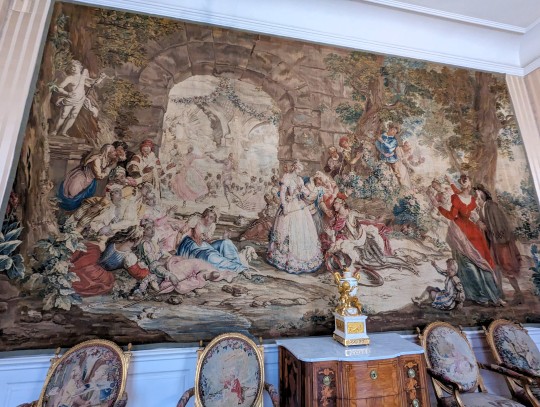
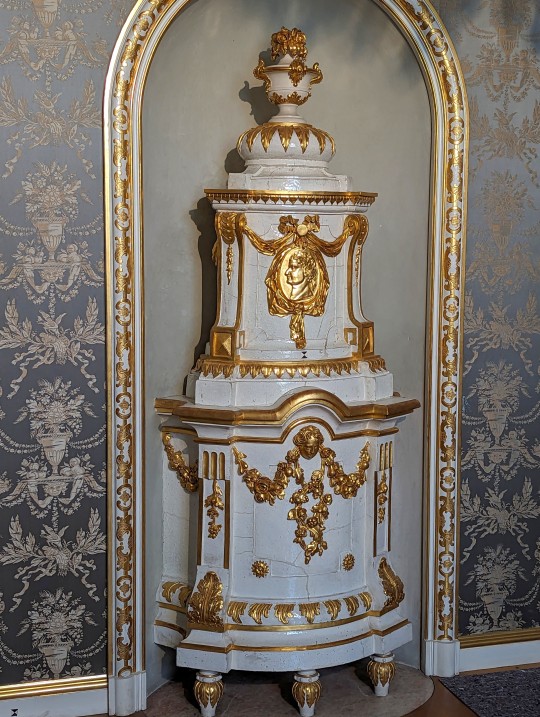



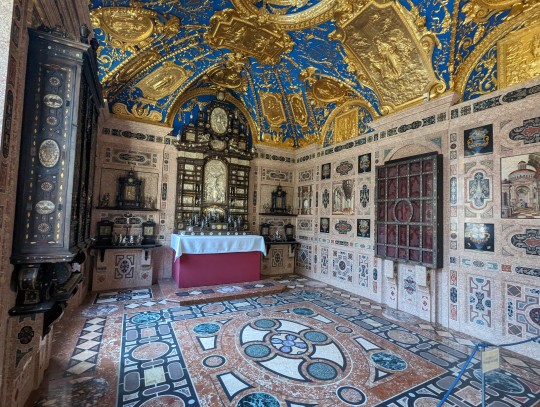

After our lengthy visit to the palace, we decided to re-visit the HofbrauHaus for lunch. This time we sat outside in their beer garden, enjoying the shade and a nice breeze. I didn’t take any pictures in the garden, not sure why, guess I was a bit distracted by the food and adult beverages! We did wander inside to take a couple of pictures that I missed on our first visit.

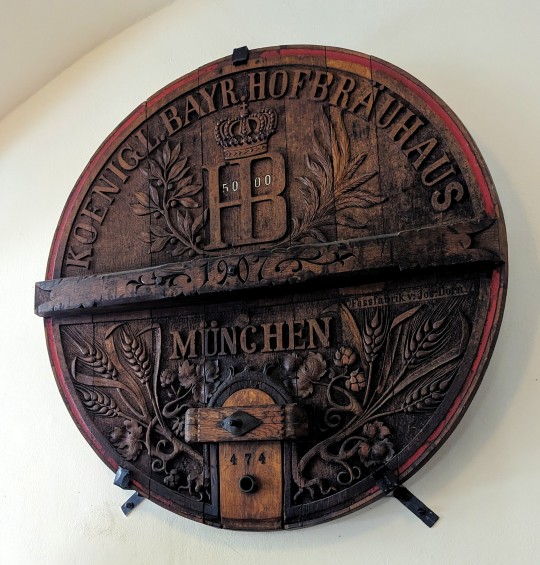
We sat in the beer garden for a good 90 minutes, just resting and cooling off. After our rest, we headed over to the New Town Hall and watched the tower clock do its thing (very entertaining performance on the hour). We then went up in the tower for some great views of Munich.

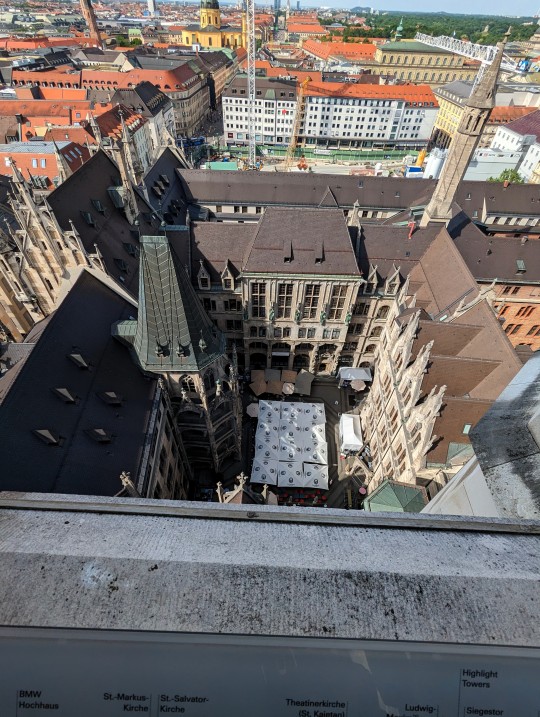
Looking toward Odeonsplatz from the tower.

Doug, acting like he was imprisoned in the tower, not sure exactly why he was feeling that way!
From the tower, we could see Frauenkirche - so we decided to go check it out:
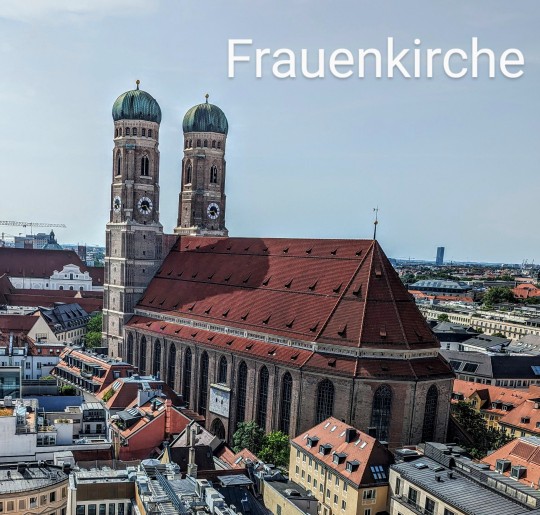
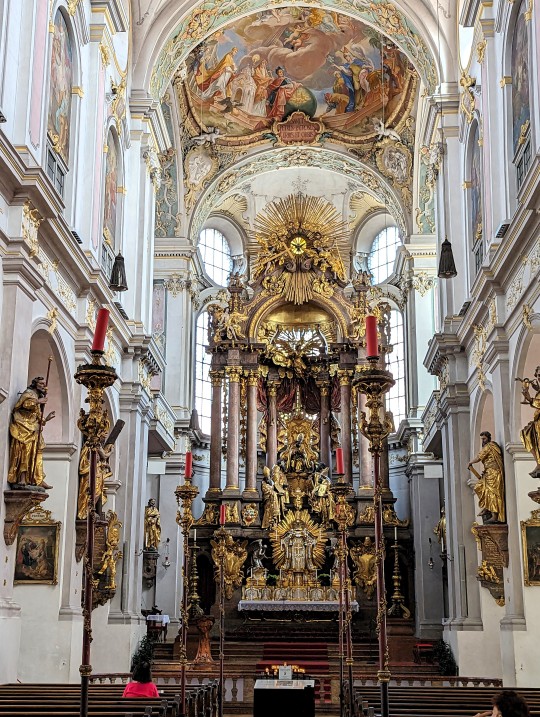

We finished our day at Asamkirche - it was undergoing renovations, so I couldn’t get a great picture of the front and pictures are not allowed inside:

We had dinner at a local beer garden by our hotel, I didn’t get any pictures there because we had to leave in a hurry when a huge thunderstorm moved in. We barely made it back to our hotel before it started pouring! Tomorrow we head to Salzburg - been a great visit to Munich!
0 notes
Text
St. Johann Nepomuk, better known as the Asam Church (Asamkirche), Munich, Germany.

504 notes
·
View notes


